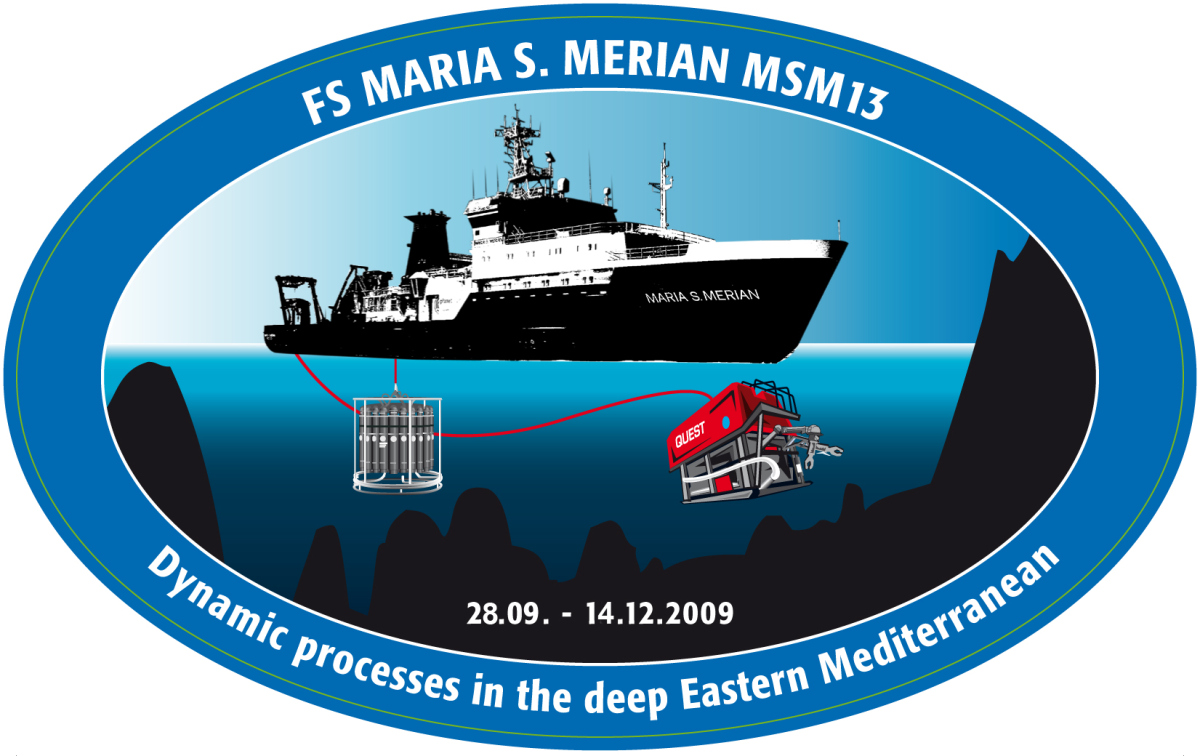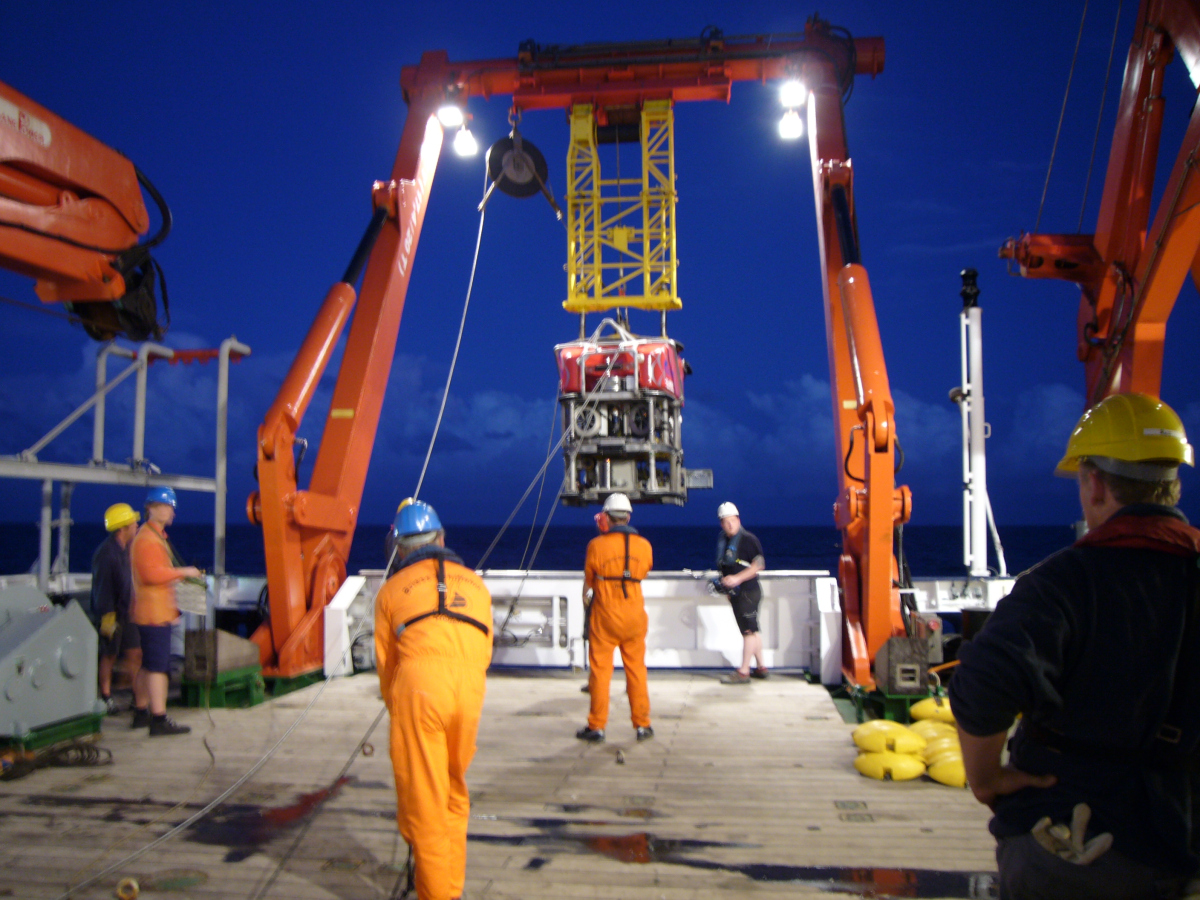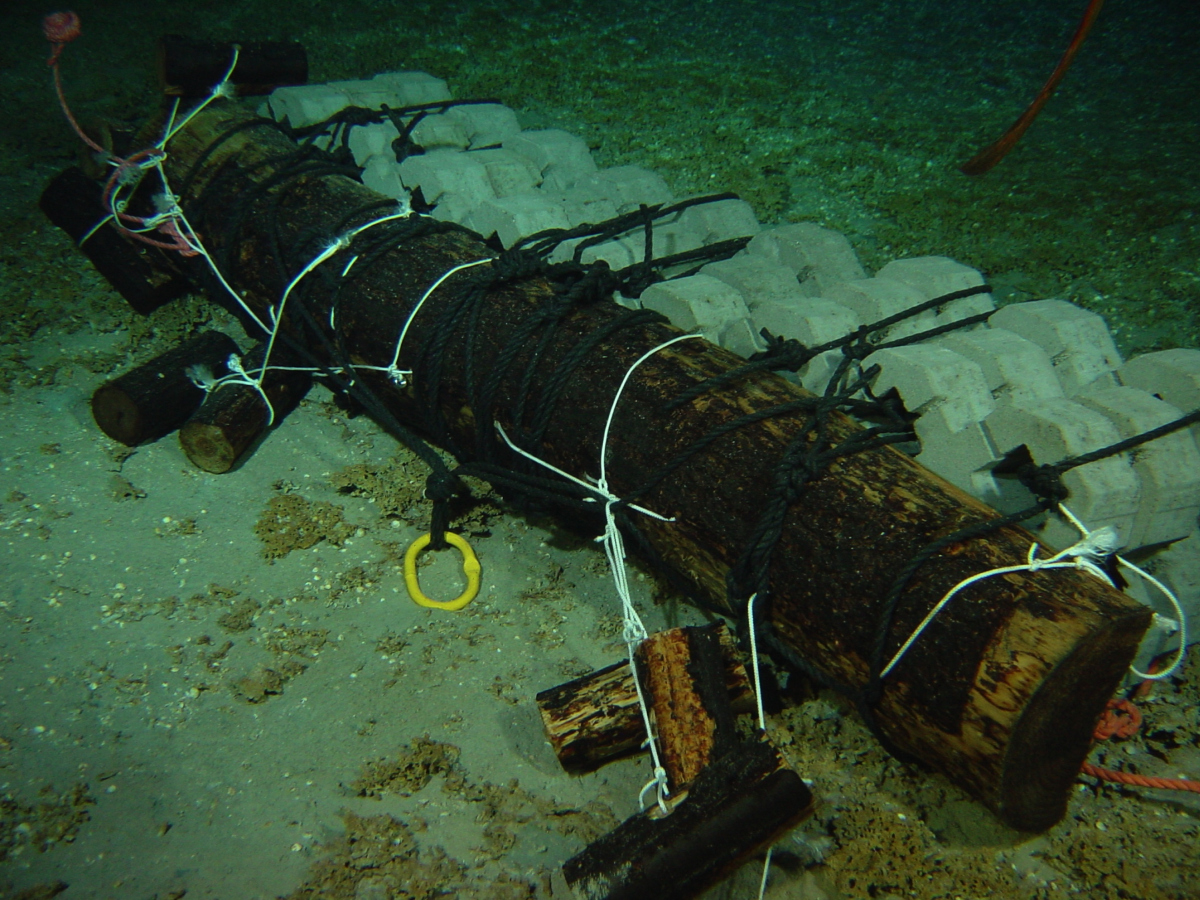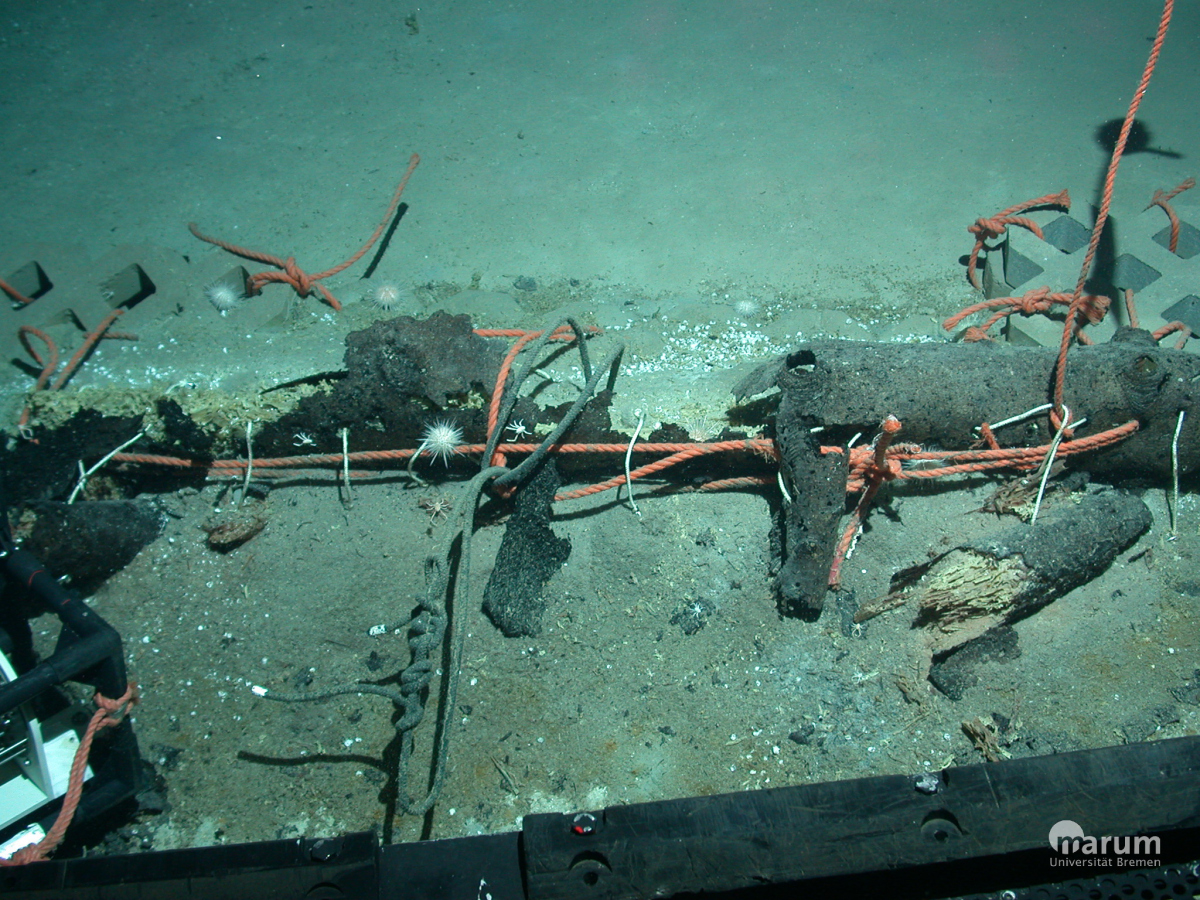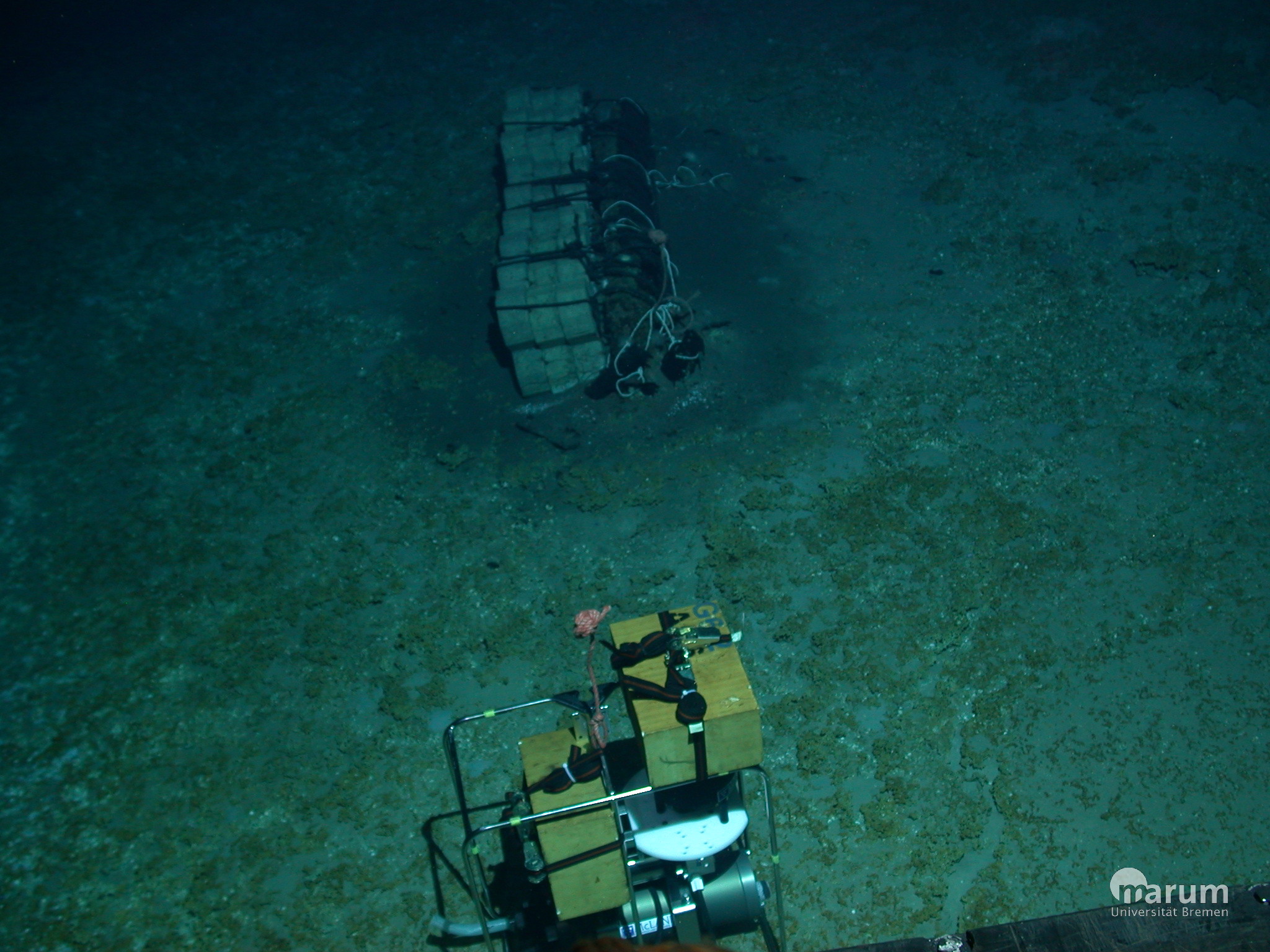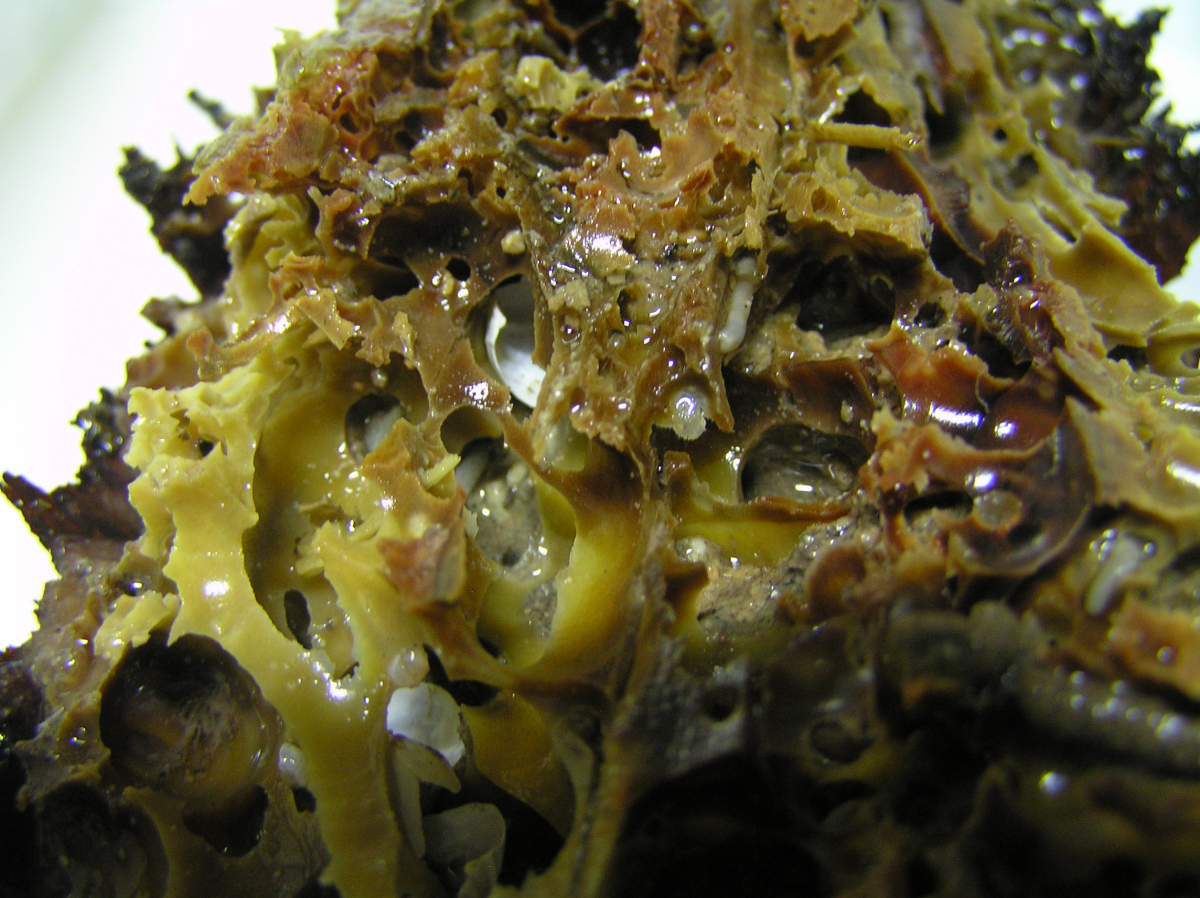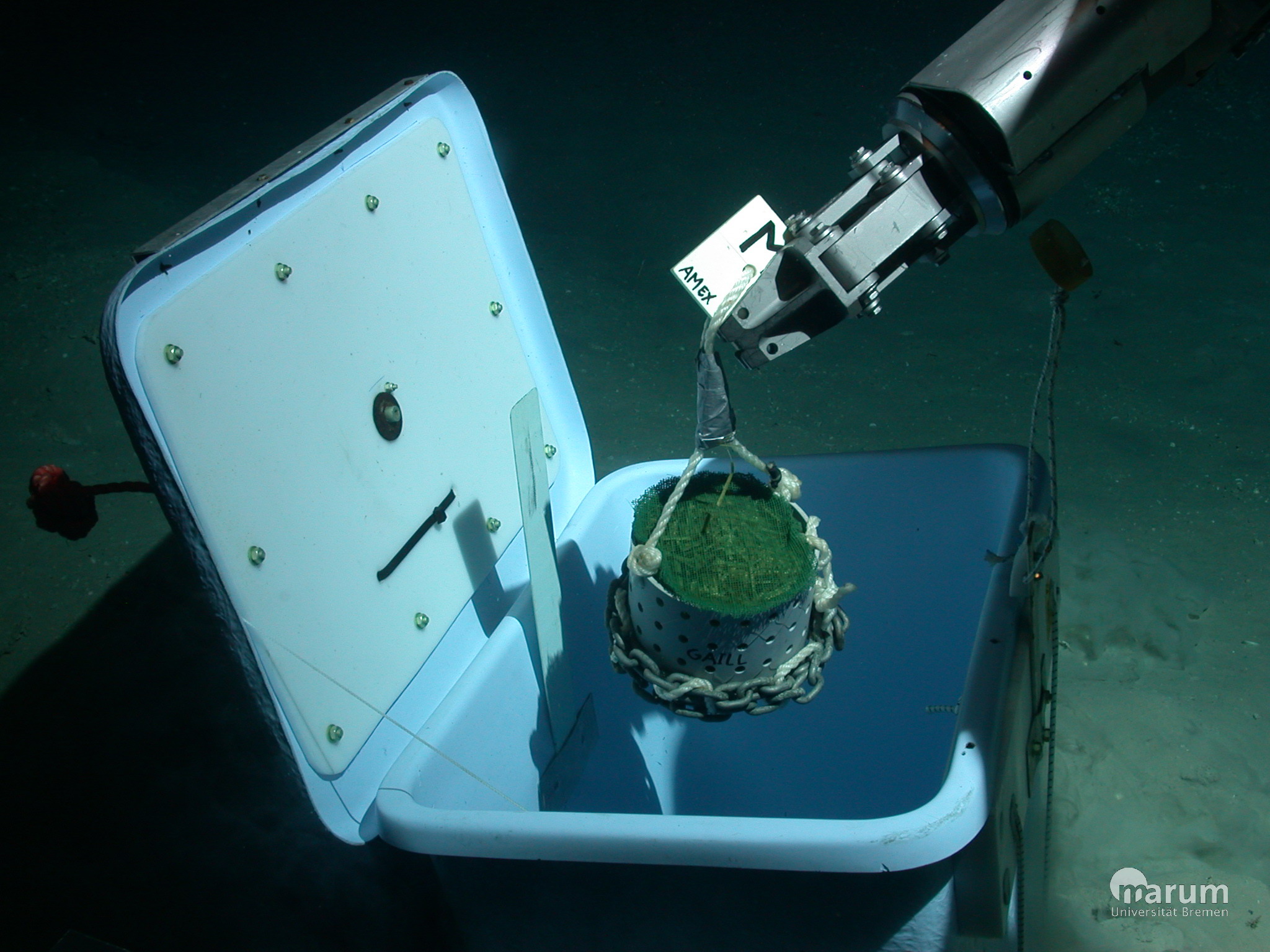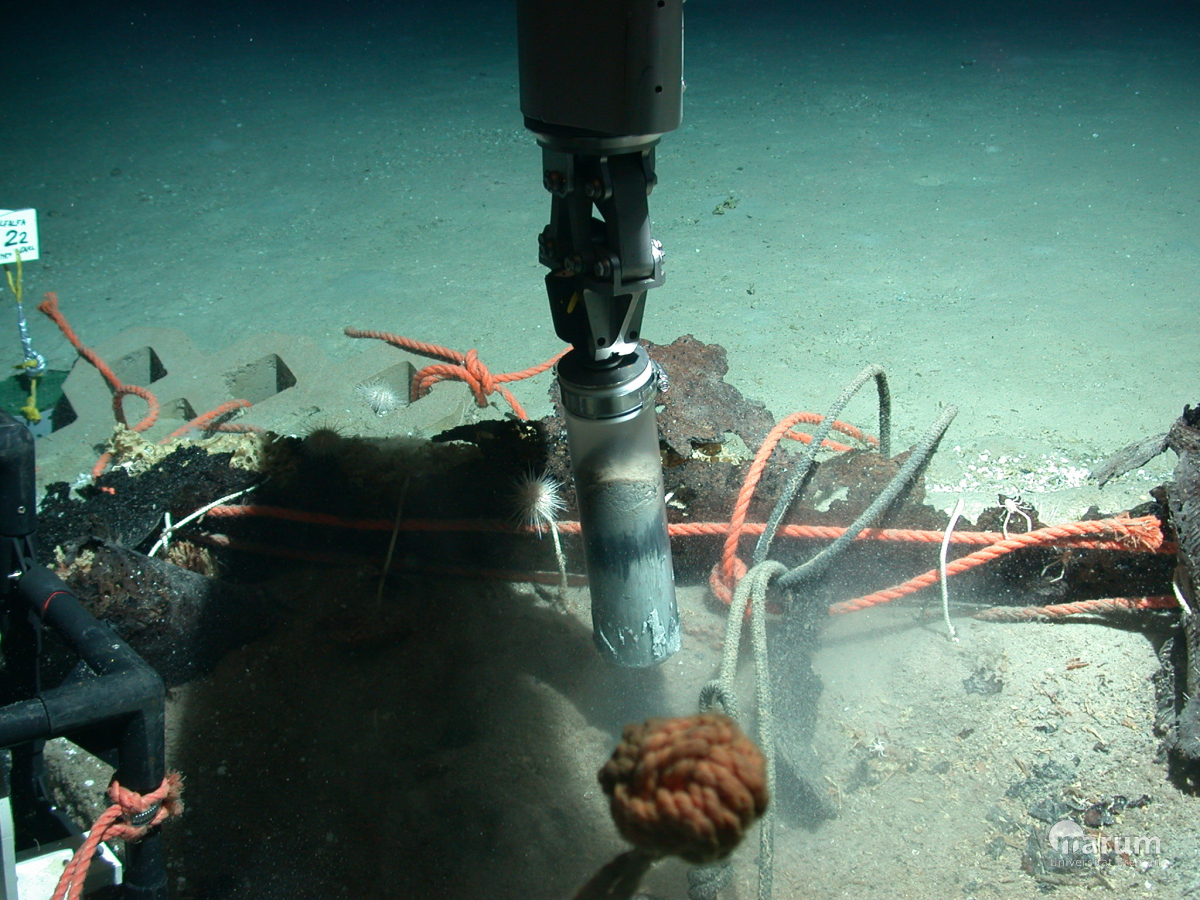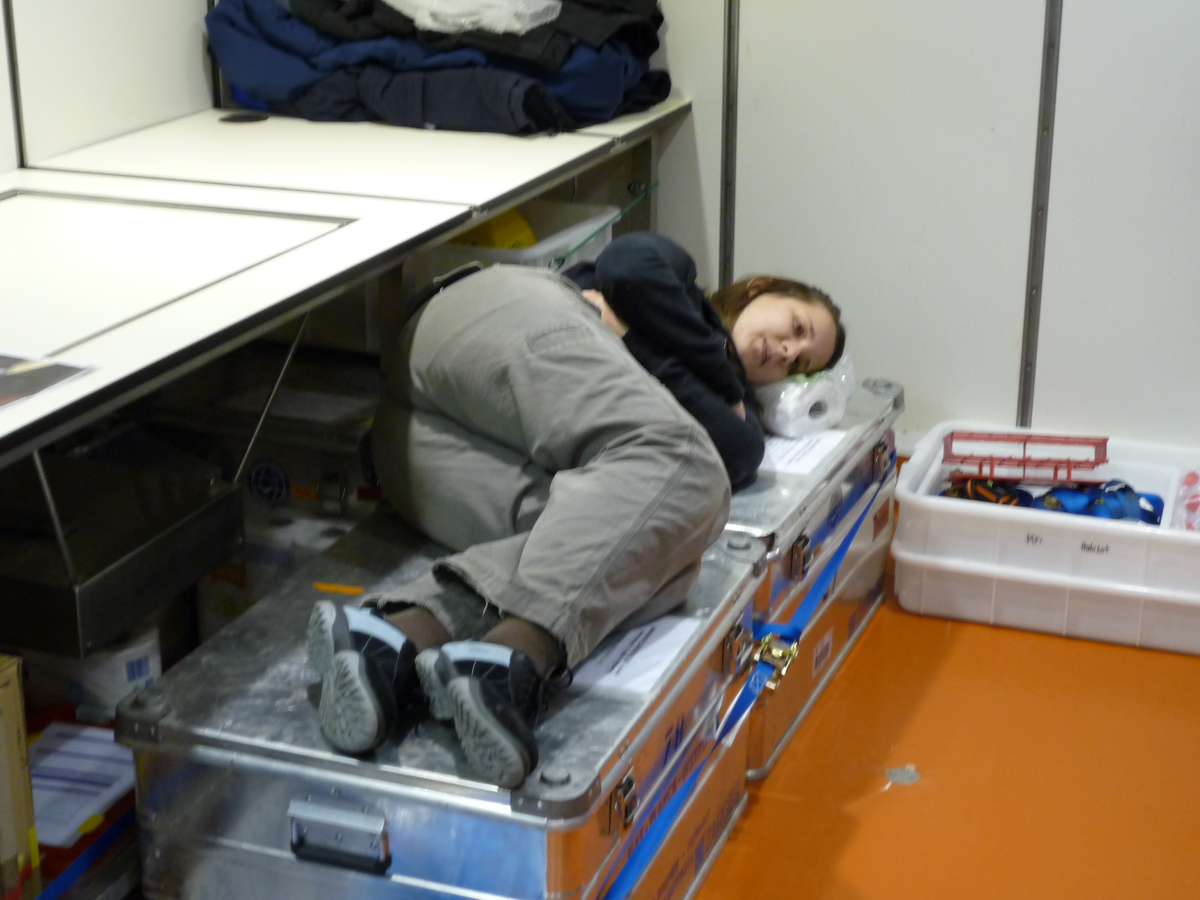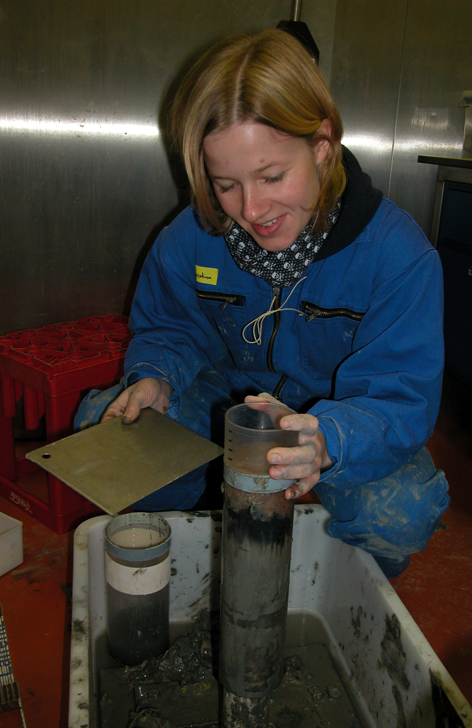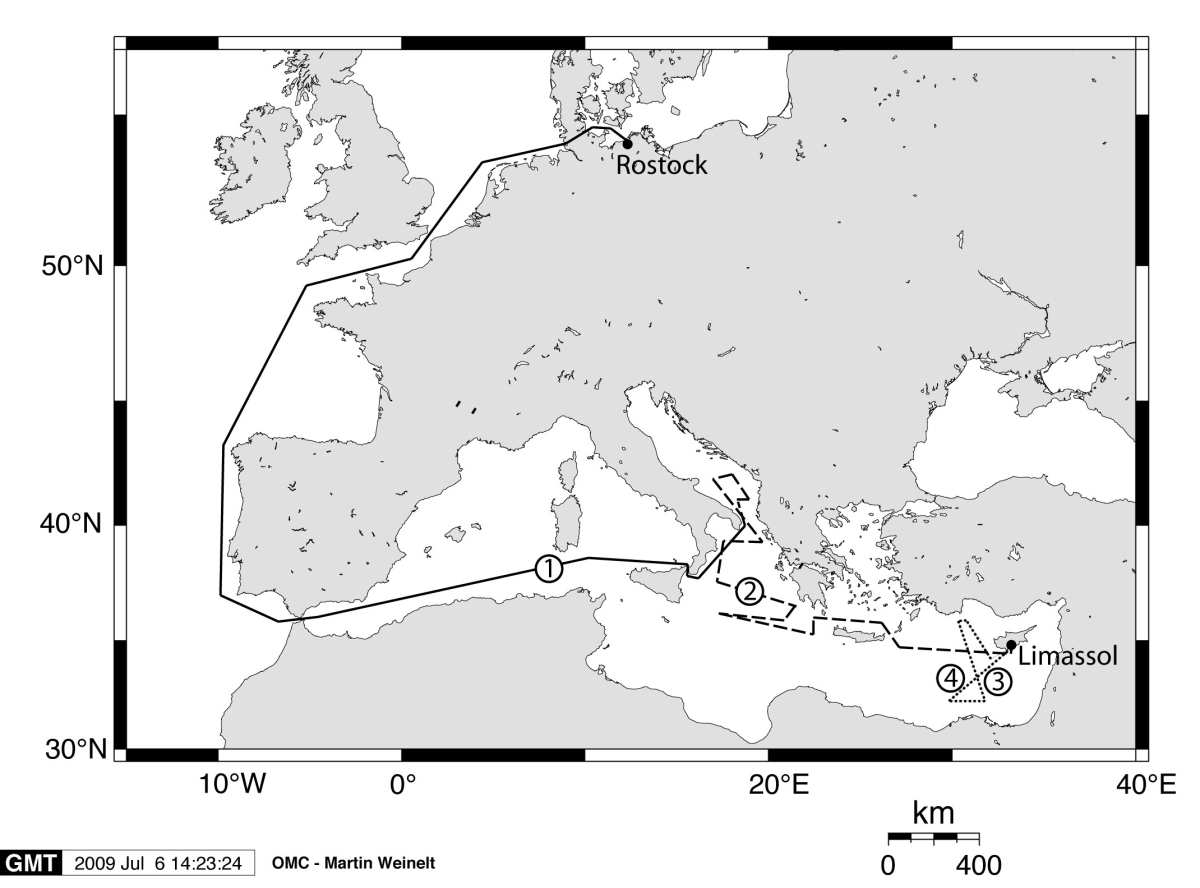Seitenpfad:
Weblog2
Chief scientist leg 3
Antje Boetius
a.boetius.d at merian.briese-research.de
Antje Boetius
a.boetius.d at merian.briese-research.de
First deployment of the deep-sea elevator by our liftboy Volker Asendorf (Source C Borowski).....
Weblog 2
26-28 October 2009
MERIAN expedition MSM13_3
The first dives
We arrived in the first working area on the Central Nile Deep Sea fan in the early morning hours of Monday morning, 26 October. The first thing to do was deploying our deep-sea elevator to bring down a colonizer experiment “Chemecoli” of the AMEX team of the University Pierre et Marie Curie of Paris, as well as some acoustic signals (“beacons”) for orientation to be distributed at the seafloor. Here we work at 1700 m water depth, in an area characterized by extensive carbonate crusts and small pockmarks covering the deep sea floor. Between crusts and pockmarks we find spots of reduced, sulfidic sediments, which are partially covered by bacterial mats and attract chemosynthetic organisms such as small bivalves and tubeworms hosting sulfide-oxidizing symbionts to cover their energy needs.
The first three dives of ROV QUEST were dedicated to geochemical measurements at the four large wood colonization experiments we had deployed and sampled in this area in 2006 (BIONIL, RV Meteor M70/2) and 2007 (MEDECO, RV Pourquoi Pas?)). We dive during the day, starting at 5 am with the preparations for the lift deployment, followed by the dive preparations and finally the deployment of ROV QUEST. When the ROV and the lift come up in the evening between 8 and 11 pm, the scientists start their work in the lab. The night is also used for mapping of the area, as the ship and its crew operate 24 hours. So after a few days, sleep becomes a real luxury.
It is an interesting story with sunken woods in the deep sea. Of course, wood is not a natural “in situ” substrate at depth, as the dark ocean floor does not host plant life. But trees and wood logs fall into the sea from islands and continents, and also from ships, and sink to the deep sea. Amazingly, there is a huge variety of deep-sea life adapted to living on and in and from wood. So since 2004, in the framework of the GDRE project DIWOOD between CNRS and Max Planck Society, we are studying how bacteria interact with the wood and the animals inhabiting the wood, to understand the biogeochemical processes leading to these small hot spot ecosystems in the deep sea.
Before and after – Wood colonization experiments 1 week and 3 years after their deployment in the deep sea. A: A colonization experiments is deployed at the seafloor.
B Wood #1 is almost completely degraded, and a pile of wood chips covers the seafloor around it. (Source MARUM, University Bremen)
The wood log is completely degraded by wood-boring bivalves and worms that use the wood as energy source and for shelter. (Source C. Borowski and C. Bienhold)
A sea urchin grazing on wood animals
(Source C Borowski)
(Source C Borowski)
Deployment of the CHEMECOLI larval colonization experiments of UPMC
(Source MARUM )
(Source MARUM )
Sampling sediment cores from the wood deployment. Below the wood chips, a blackish layer of reduced, sulfidic sediments has developed from bacterial wood degradation.
(Source MARUM )
(Source MARUM )
The cruise of MSM13_3
Coming back after three years we find that the woods are almost completely degraded by wood-boring bivalves, a deep sea variety of the so called “shipworm”, as well as some large white worms called “peanut worms”, or “sipunculids”. Only a few of these wood degraders are left in the remnants of the wood logs. The wood logs have been turned to wood pulp, which covers the seafloor around the wood. The wood pulp is further degraded by bacteria aerobically (with oxygen) and anaerobically (without oxygen). Where oxygen gets depleted by the bacteria, the sediment turns black and sulfide forms. This sulfide production may be the reason, why chemosynthetic animals with sulfide oxidizing symbionts are attracted to wood as a habitat on the seafloor, even at great distances to vents and seeps. But also the local sea urchins are still attracted to the wood communities, most likely because these predators find a high biomass of prey. During the first three dives, we have measured this sulfide production as well as oxygen consumption and other biological parameters at the sunken woods and away, and have sampled the microbial and animal communities of the woods. Unfortunately, the QUEST robot has a few technical problems, so the dives were short and limited to a few measurements and samples. But this is only the beginning of the mission, and we are very happy with the first results, the excellent weather conditions and the ship, which is amazingly stable, quiet and comfortable as a research platform.
Antje Boetius
Antje Boetius

